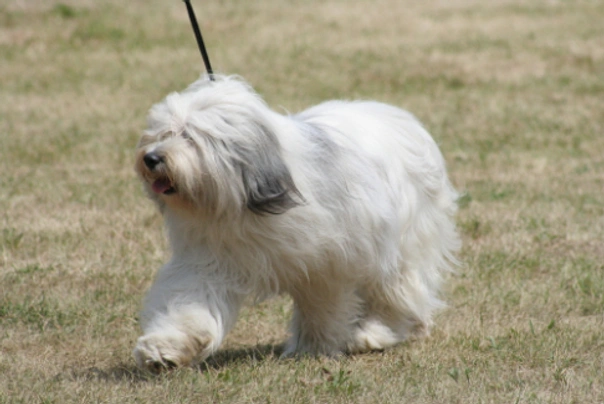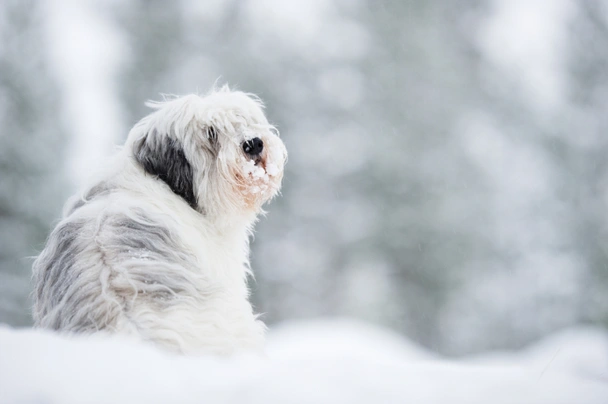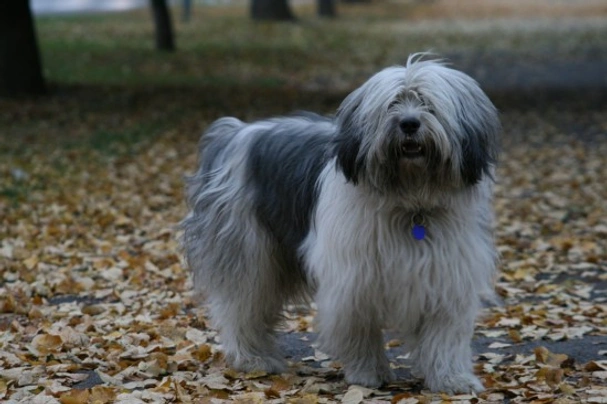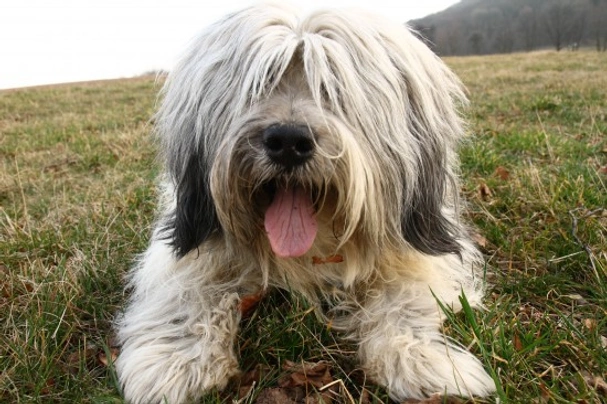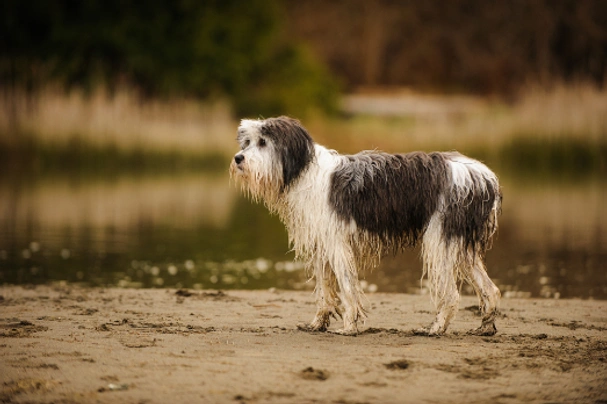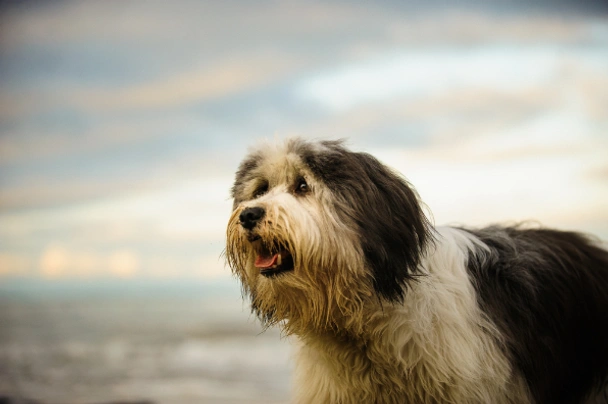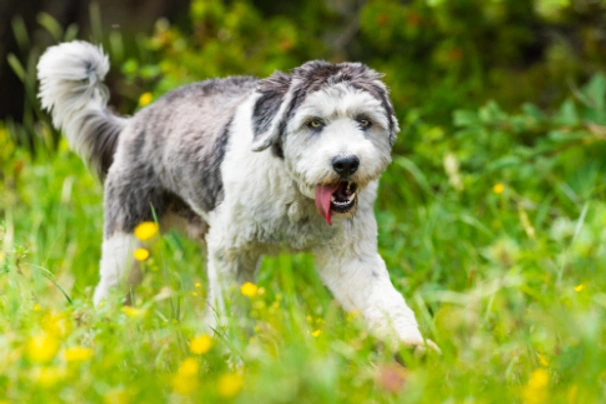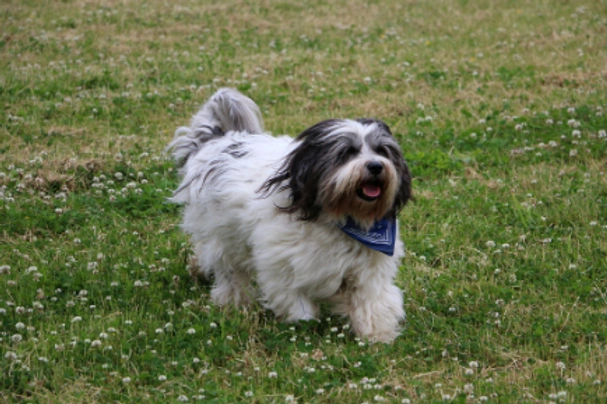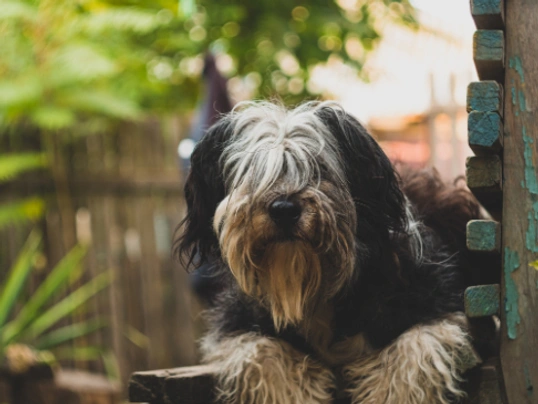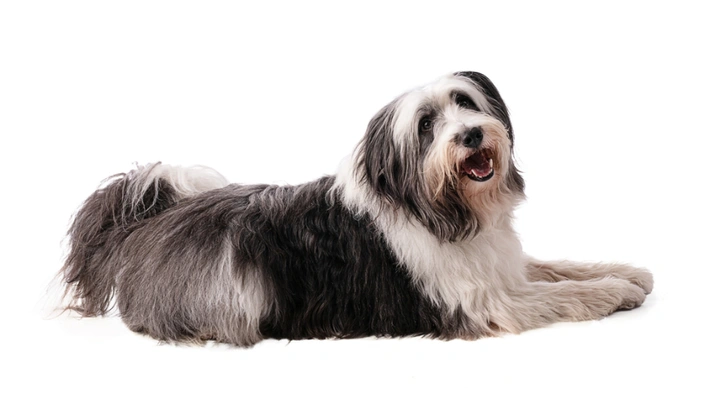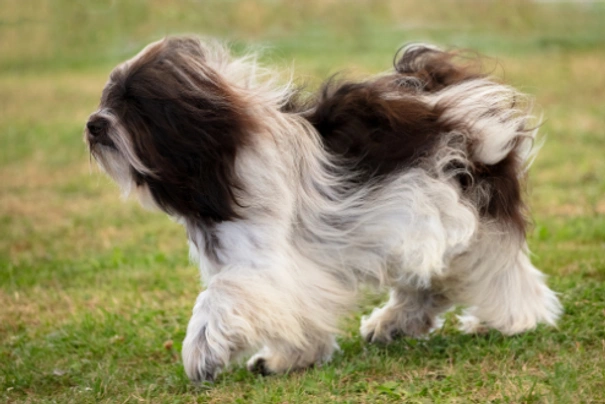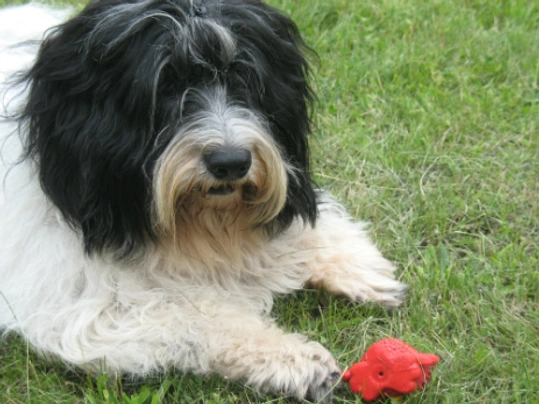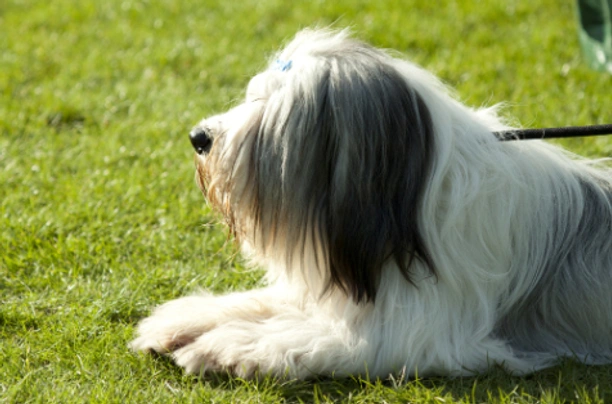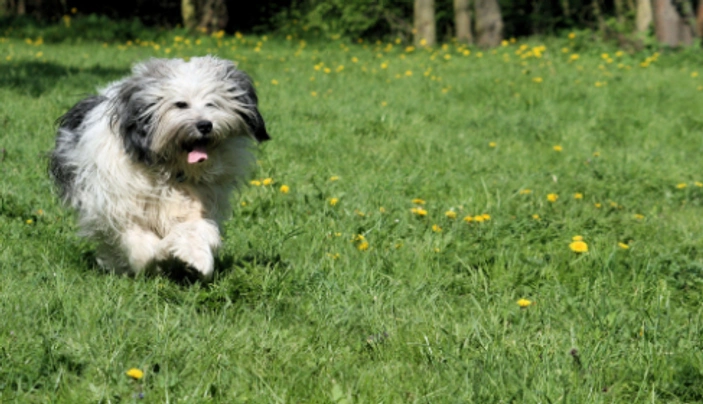Polish Lowland Sheepdog
Pros
Cons
Introduction of the Polish Lowland Sheepdog
The Polish Lowland Sheepdog, affectionately known as the PON, is a historic and robust working breed hailing from Poland. Their distinctive shaggy coat and alert expression complement a lively, intelligent temperament that has made them both exceptional herding dogs and beloved family companions. Originally bred for herding and guarding flocks on the lowlands of Poland, these medium-sized dogs thrive on activity, mental stimulation, and close connection with their owners.
Physically compact yet muscular, the Polish Lowland Sheepdog is imbued with natural agility, intelligence, and a strong work ethic. These traits make them highly trainable for variety of canine sports and jobs today, whilst their loyal and affectionate nature resonates well with families seeking an energetic, devoted canine friend. However, their sharp minds and independent streak require owners who are experienced with intelligent working breeds and willing to invest in consistent training and socialisation from puppyhood.
Ideally suited to active households with access to ample outdoor space, the PON flourishes when given daily exercise that challenges both body and mind. Their thick double coat demands regular grooming to remain healthy and prevent matting, a commitment prospective owners must be ready to undertake. Overall, the Polish Lowland Sheepdog is a wonderful choice for experienced owners who desire a medium-sized, versatile dog with both heart and hustle.
Perfect For
Active individuals or families who enjoy outdoor pursuits and are committed to regular exercise and mental stimulation. Those with prior experience of intelligent working or herding breeds will find the PON rewarding. Homes with gardens and access to safe off-lead areas suit this breed best, while owners valuing a loyal, alert watchdog will appreciate their natural instincts.
Key Considerations
The breed’s thick, shaggy coat requires regular grooming and care to avoid tangles and maintain skin health. They have a moderate to high exercise need, necessitating daily walks plus playtime and stimulation. The Polish Lowland Sheepdog is not suited to apartment living due to its energy levels and need for space. Their independent, intelligent nature means consistent training and early socialisation are essential to prevent behavioural challenges like dog aggression or dominance issues. Separation anxiety can occur if left alone for long periods, so this breed thrives best in homes with company throughout the day.
History of the Polish Lowland Sheepdog
The Polish Lowland Sheepdog's origins trace back centuries to Central Asia and the nomadic tribes of Mongolia, Tibet, and the Gobi Desert who bred sturdy, shaggy-coated dogs to herd livestock across vast terrains. As tribes migrated westward, ancestors of the PON adapted to the lowland flocks of Northern Europe, particularly Poland, where they were prized for their agility, intelligence, and protective instincts around villages and flocks.
Early Development
The breed has documented history dating as far back as the 13th century, with early use focusing on herding and guarding small to medium flocks. It is believed Polish sailors introduced the dogs to Scotland, potentially influencing local sheepdog breeds. During World War II, the breed neared extinction, but dedicated Polish breeders traced and preserved the gene pool from just a few survivors, notably under the stewardship of Dr Danuta Hryeniewicz and his dog Smok. This revival was crucial to the PON's survival and continued existence.Modern Recognition
Recognised by the Fédération Cynologique Internationale (FCI) in 1959, the breed arrived in the UK in 1985, brought by Belgian breeder Mr Mossakowski. Early UK litters quickly established a firm gene pool, and the Kennel Club granted official recognition in the early 1990s. The Polish Lowland Club was founded in 1985 to promote breed welfare, health, and ethical breeding practices. Today, the PON is cherished worldwide as a spirited working and companion animal, though limited litter numbers maintain its niche status.Appearance of the Polish Lowland Sheepdog
Size and Build
The Polish Lowland Sheepdog is a robust and compact working dog standing at the withers between 45 to 50 cm for males and 42 to 47 cm for females. Males typically weigh 18 to 20 kg, with females slightly lighter at 16 to 18 kg. Their bodies are rectangular in profile with well-muscled frames and a strong, agile gait that reveals their herding heritage. Shoulders are muscular with strongly laid-back angulation; their legs are straight yet sturdy, with oval-shaped feet bearing tight toes and firm pads.
Coat and Colours
The breed is known for its dense, medium to long shaggy coat consisting of a thick, weather-resistant topcoat and a softer, insulating undercoat. Hair is especially profuse around the head, giving the characteristic effect of a large furry face partially obscuring the eyes. Acceptable colours under Kennel Club registration include black, black & tan, black & white, black grey & white, chocolate, chocolate & white, cream, cream & fawn, fawn, fawn & white, grey, and grey & white. The breed standard is flexible on colour except merle, which is not allowed. Seasonal shedding is low to moderate.
Distinctive Features
The heart-shaped, moderately sized ears set high on the domed skull, with tips drooping close to the cheeks, are distinctive for the breed. Their medium-sized oval eyes, ranging from hazel to brown, convey alertness and intelligence. The blunt, dark nose and broad muzzle complement the pronounced stop that defines their profile. The tail extends as a natural continuation of the croup, often carried high with a slight curve when excited, but hanging low in repose. A smooth, ambling gait is typical in motion.
Gender Differences
Males are generally slightly larger and more muscular while females may be more refined in build. Temperamentally, males can display more assertiveness, whereas females often exhibit a calmer demeanour, though individual variation is common. The breed standard encourages balanced proportions and sound structure for both sexes, tailored to functional agility rather than exaggerated show features.
Temperament of the Polish Lowland Sheepdog
The Polish Lowland Sheepdog is an alert, lively, and highly intelligent breed known for its strong bonds with family members and its keen watchdog abilities. While generally affectionate and playful, they can show wariness toward strangers, making them excellent natural guardians who alert owners calmly without undue aggression.
Maturity in the PON is slow, with physical and mental development continuing well past one year. Their keen memory and sharp intelligence mean they quickly learn commands and routines, but they also possess an independent streak that requires firm leadership and consistent direction to prevent dominance behaviour. Early and ongoing socialisation is critical for well-rounded adult dogs, especially to mitigate any potential aggression toward unfamiliar dogs.
The breed thrives in active households where its energy can be channelled positively, but they do not cope well with prolonged solitude. Separation anxiety is common if left alone for extended periods and can manifest as destructive behaviour or excessive barking. Their prey drive remains strong, reflecting their heritage, so care must be taken when they are near smaller animals or pets.
Playfulness and mischievousness add to their charm, but these traits require outlets through mental and physical activities. Adaptability to different environments depends largely on sufficient exercise; the PON is unsuitable for apartment life but settles calmly when tired in a home setting. They are best suited to owners experienced with intelligent breeds who understand their specific needs and behaviours.
Intelligence / Trainability of the Polish Lowland Sheepdog
The Polish Lowland Sheepdog is known for its exceptional memory and quick learning abilities, making it highly trainable for owners familiar with the breed's characteristics. Early socialisation and consistent training from puppyhood are essential to shape a well-mannered adult dog. Training sessions should be engaging and varied, employing positive reinforcement techniques that encourage desired behaviours while avoiding harsh corrections.
Attention spans can wane quickly in such intelligent dogs, so keeping sessions short and rewarding with high-value treats helps maintain focus and enthusiasm. Patience and firmness are required to manage their independent nature and occasional stubbornness, ensuring they do not develop unwanted dominant behaviours. Puppy training should prioritise foundational commands such as come, sit, stay, heel, quiet, leave it, down, and bed.
PONs excel in canine sports like flyball, agility, and obedience trials, which provide both physical exercise and mental challenges tailored to their instincts and energy levels. Incorporating grooming into the training routine also helps dogs acclimatise to handling and build positive associations with care. Overall, training a Polish Lowland Sheepdog is rewarding for owners who maintain consistency, structure, and plenty of positive interactions.
Children and other
The Polish Lowland Sheepdog is generally very good with children, displaying a gentle and playful nature that makes them excellent family pets. However, interactions with toddlers should always be closely supervised to prevent accidental knocks or overly boisterous play, which can be risky especially when the dog or child is very young.
With early and proper socialisation, PONs tend to get along well with other dogs and can coexist peacefully with cats when introduced gradually. However, due to their strong prey drive, caution should be exercised around smaller animals that the dog might see as potential quarry. Teaching children how to behave respectfully around the dog is essential to maintain harmony and safety.
Families should provide safe spaces where the dog can retreat when needing rest from exuberant young children. The breed's energy matches well with active kids who enjoy outdoor play and exercise, but owners must ensure the dog's needs for mental and physical activity are met to prevent boredom-related behaviours.
Health of the Polish Lowland Sheepdog
The Polish Lowland Sheepdog typically enjoys a lifespan of 12 to 15 years when given proper care, diet, and regular veterinary attention. They are generally a healthy, hardy breed but can be prone to some hereditary conditions that responsible breeders mitigate through rigorous health testing.
Key health issues for the breed include hip dysplasia and Central Progressive Retinal Atrophy (CPRA), both of which breeders attempt to minimize through the use of the BVA/KC Hip Dysplasia Scheme and BVA/KC Eye Scheme. Skin allergies are also reported, often linked to diet or environmental factors, requiring veterinary management.
Vaccinations for PON puppies start with the breeder before sale, with new owners responsible for follow-up boosters and ongoing vet care. Neutering is commonly advised between 6 and 12 months of age, balancing maturity with health benefits. Older dogs require adjustments in diet and exercise to maintain healthy weight and adapt to potential arthritis or sensory decline.
Insurance considerations for this breed include coverage for hereditary conditions, particularly for hips and eyes. Regular health screening and early detection can help manage conditions and improve quality of life. Overall, the Polish Lowland Sheepdog is a breed with good longevity and robust health when cared for properly.
Caring for the Polish Lowland Sheepdog
Daily care for a Polish Lowland Sheepdog involves dedicated grooming, exercise, and monitoring of health needs. Regular grooming several times a week prevents matting of their dense topcoat and soft undercoat, with special attention to trimming hair between pads and cleaning ears to avoid infections.
Puppies are energetic and require puppy-proofing of homes and gardens before arrival, alongside socialisation and early veterinary care. Essential items include quality gates, playpens, suitable toys, grooming tools, and safe feeding equipment. Managing noise levels when bringing a new puppy home helps reduce stress and supports confident development.
Exercise should be suitable to age, avoiding overexertion in young dogs to protect growing joints. Older dogs need modified activity levels but still benefit from regular exercise to maintain muscle tone and mental acuity. As PONs age, dietary adjustments and monitoring of health changes help ensure their wellbeing.
Creating a safe and calm environment with regular vet visits, dental care, and mental engagement supports the health and happiness of Polish Lowland Sheepdogs throughout their lives, including their senior years when special care is often required.
Grooming of the Polish Lowland Sheepdog
The Polish Lowland Sheepdog’s medium to long shaggy coat requires regular grooming to maintain health and appearance. They should be brushed several times a week to prevent tangles and knots, paying close attention to the profuse hair around the head which often covers the eyes. Their coat sheds little, which benefits owners seeking lower shedding dogs.
Trimming the hair between paw pads is important to prevent mud or ice buildup that can cause discomfort, especially in colder months. Ear care is essential to check for wax build-up and prevent infections which can be difficult to treat and painful for the dog. Regular ear cleaning with appropriate products and prompt veterinary care is advised when infections arise.
Many owners find grooming sessions also helpful as training opportunities, reinforcing positive behaviour around handling. Using appropriate tools like slicker brushes, grooming gloves, and gentle scissors for trimming aids in efficiently managing the coat. Regular professional grooming visits can complement home care but are not always mandatory.
Exercise of the Polish Lowland Sheepdog
Polish Lowland Sheepdogs are active, intelligent dogs requiring at least one hour of physical exercise daily, with additional mental stimulation to keep them balanced and prevent boredom. Multiple daily walks including an energetic afternoon session, alongside safe off-lead time in a securely fenced garden or open area, satisfy their energetic needs well.
Puppies require moderated exercise avoiding high-impact activities to protect developing joints and bones. As adults, the breed thrives on varied activities including agility, obedience, and herding trials which challenge their intellect and agility.
Owners should monitor weather-related conditions, avoiding excessive heat during summer walks and protecting paws during icy winter months. Mental stimulation such as puzzle toys and training games supplement physical exercise to keep the active mind engaged.
A typical weekly schedule might include brisk morning and afternoon walks, play sessions, and training exercises several times per week to fully satisfy the breed’s needs.
Feeding of the Polish Lowland Sheepdog
Nutrition for Polish Lowland Sheepdogs involves feeding high-quality diets adjusted for life stage, activity level, and health status. Puppies benefit from a highly digestible, nutritionally balanced puppy food fed 3-4 times daily in growing stages, gradually transitioning to adult food at around 12 months.
Adult dogs are fed twice daily with portions tailored between approximately 199g to 289g depending on weight (16 to 20 kg range) and activity level. Treats should be used sparingly to prevent weight gain, a concern especially post-neutering.
Special dietary considerations include managing allergies commonly linked to food or environmental factors, emphasizing the need for diets free from fillers and common irritants. Senior dogs require diets lower in calories but rich in protein and joint-supporting nutrients to maintain muscle tone and avoid obesity.
Regular monitoring of body condition and consultation with a vet ensures the dog’s diet supports a healthy weight and overall wellbeing throughout its life.
Polish Lowland Sheepdog price
The average purchase price for a well-bred Polish Lowland Sheepdog puppy from a responsible breeder ranges from approximately £800 to £1,500 in the UK. Due to limited availability and small litter numbers, buyers may often find themselves on waiting lists for months to secure a puppy.
Initial setup costs include essentials such as quality grooming equipment, toys, bedding, collars, leads, and feeding bowls, which can total around £150 to £300 depending on choices and brand preferences.
Ongoing monthly expenses generally fall between £60 to £100, covering premium dog food (£30-40), routine health care (vaccinations, worming, flea treatments), and insurance. Insurance premiums vary according to location, age, and coverage levels but may range around £30 to £85 monthly, with lifetime policies at the higher end.
Routine veterinary costs including annual vaccinations and health checks typically exceed £900 yearly, while occasional professional grooming or training classes add to ownership expenditures. Responsible budgeting for these factors ensures long-term commitment to the breed’s health and wellbeing.
To explore available Polish Lowland Sheepdogs, prospective owners can find Polish Lowland Sheepdog for sale on Pets4Homes.
Buying advice
Prospective buyers seeking a Polish Lowland Sheepdog should be prepared for lengthy waiting periods due to limited breeder availability and the breed’s modest annual puppy numbers. Considering this, early enquiries and registration with reputable breeders are crucial.
Finding Ethical Breeders
Look for breeders affiliated with the Polish Lowland Sheepdog Club or Kennel Club Assured Breeders programme who prioritise health, temperament, and responsible breeding practices. Thorough questions regarding health screening, socialisation, and living conditions are essential to ensure puppies come from well-managed environments.
Health Testing Verification
Ethical breeders will provide clear documentation of hip scoring and eye testing under the BVA/KC schemes to minimise hereditary risks. Checking relevant databases and requesting test certificates is prudent before committing.
Puppy Selection Process
Observe litter temperament to select puppies displaying confidence and sociability. Health checks and early vet assessments form integral parts of this process, ensuring suitability for family life and owner expectations.
Contract and Guarantee Review
A written contract should outline health guarantees, return policies, and dispute resolution terms. Beware of vague or incomplete agreements, and seek legal advice if unsure.
Rescue and Adoption Options
While the breed is not commonly found in rescues, interested individuals may contact breed-specific rescue groups or broader sheepdog rescues for adoption possibilities. Adopting an adult dog can be a fulfilling option that benefits both dog and owner.
Explore available puppies and adult dogs through a trusted source: find Polish Lowland Sheepdog for sale on Pets4Homes.
